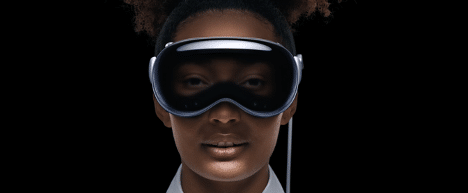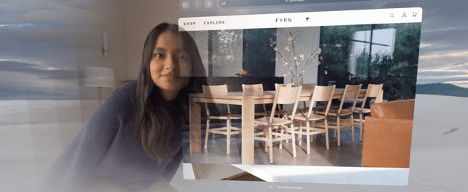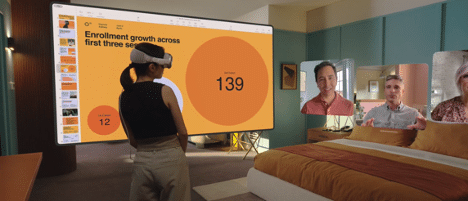Apple Vision Pro focuses on the correct problems

Apple AR/VR headset solution ‘Vision Pro’ was launched on June 5th. While the device has just debuted, it promises to focus on critical experiences that other players in the XR market have largely overlooked or haven’t been able to address. We at A-CX have used VR daily at our work for a year and a half. We’ve also worked on the XR space with our clients. In this blog post, we will explore why Apple’s approach to their new headset feels right and how it tackles the crucial challenges users face in augmented and virtual reality. The implications of this focus haven’t been adequately covered in the media reports so far. In our opinion, Apple has a clear vision and is building a new category. Read on to find out why we say Apple Vision Pro focuses on the correct problems.
What’s available today, and what do people want?
Today’s XR market consists of spot solutions tailored for specific use cases. Varjo has pushed the technical capabilities of VR and offers an excellent platform for several specific use cases, from pilot training to military use. Don’t get me wrong. What they do, they do very well. Meta has brought an affordable VR and the first VR experience for millions, but the experience isn’t polished. You can read more about the positives and negatives from the learnings of our first 500 VR meetings. Microsoft’s HoloLens and Google Glass miniaturized AR, but the experience wasn’t a home run yet. All of these solutions are niche. They don’t enrich a current experience but try to introduce something new.
Our research has shown people don’t crave more devices but devices that can do more. Our lives, both professional and personal, are complex and diverse. Meetings are no longer all in-person or all virtual. They are often mixed. The lack of proper pass-through vision limits VR usage to a fixed space. In many use cases, this is acceptable, but some of us want to move around during our calls. People must take calls and meetings while on the go, juggling between a laptop/mac, mobile, XR headset, etc. The same goes for our personal lives and entertainment. Many of us don’t have the luxury of jumping to a fully immersive movie or gaming session. Our loved ones need our attention and interaction. So far, the XR devices in the market haven’t catered for such dynamic lifestyles and diverse needs.
Apple promises to solve three problems with Vision Pro

First, Vision Pro comes with a digital crown that allows you to control the level of immersion (from a full pass-through to a full VR). You can mix a movie screen into your living room, phase out the living room and replace it with another background, or black out everything but the virtual movie screen. Controlling the level of immersion allows you to choose how present you are with your team, family, and surroundings. In addition to your chosen level of immersion, the headset uses its own judgment. When a person approaches you, the headset lets you see them, interact with them, and return to an immersion level of choice when you so choose.

Second, Vision Pro captures the characteristics of your face with Machine Learning. When you’re in a pass-through mode, people around you see your eyes, making communicating more natural. Technically, Vision Pro captures your face with cameras and sensors. It then displays your eyes and face in real-time on a curved OLED display outside the headset. This may sound creepy but looks quite natural in the Apple demonstration.

Third, taking Machine Learning and face capturing a step further, you can join video calls with a headset, such as FaceTime. Assuming this works as well as in the Apple demo, this is big. So far, wearing a headset has meant joining through a cartoonish avatar. I see the benefit of joining video conferences, or FaceTime calls with a high-resolution video and spatial audio headset. But it’s a high price if the other party can’t see my face. Now, Apple claims we can both have our cake and eat it.
There’s a fourth problem Apple’s headset doesn’t address
Seeing the faces of the people in the meetings and calls adds so much context. Seeing their faces also encourages me to keep my camera open. The fourth visibility challenge remains unsolved even after Apple’s announcement. When someone with a less capable headset joins a video call, I can’t see their facial expressions, no matter how technologically advanced the headset I have. Maybe Apple will build another walled garden where only Apple devices offer the full experience, like iMessage and FaceTime. In Apple’s announcement, partners such as Zoom and Teams were highlighted. This gives hope that a level of interoperability is at least in consideration.
Why do we believe Apple is focusing on the correct problems?
We’re not saying that Apple has already solved the issues and has another sales hit in its hands. The first-generation device is still bulky, expensive…and unavailable. We’re saying that Apple seems to be solving the correct problems. When Moore’s law runs its course for a cycle or two, we’ll have a reasonable cost (in Apple terms), a compact enough device with an acceptable battery life/charging solution. At that point, people want an all-rounder solution, like their iPhone is today. At A-CX, we have studied the needs and preferences of professionals and consumers alike. One thing that many companies get wrong is the importance of the familiar ecosystem. We don’t want to learn an all-new way of connecting, consuming content, and interacting. Everybody appreciates familiar solutions that work with different devices, browsers, locations, and over varying connections. We want experiences that minimize the micro-frictions with our tech stack of choice.
An all-rounder solution must adapt to real-life situations at home and work. Apple is building the wow factor and addressing usability on many levels. The user can be more naturally present both in-person and remotely. Our colleagues/family members can have an eye-contact with us and cause fewer jump scares. People on the other end of the call get to see our faces (or a computer-generated recreation) instead of an avatar. With the success of filters, maybe that’s what people want to show and see in the future anyway.
The story is good; what about the execution?
Naturally, the above is based on Apple’s launch event. Apple Vision Pro focuses on the correct problems, or so we have been told. We all know Apple can do marketing. In the coming months, we’ll discover how well they deliver and energize the rest of the ecosystem. iPhone only broke through when they got the app ecosystem going. Up to that point, it was one big smooth touch display with an Apple logo on the back.
What do you think? Please get in touch with us and leave your thoughts.
